Woven Stories: The Rich Tapestries of Pascal Monteil
Pascal Monteil’s rich, vibrant tapestries are rich with references to stories from all around the world, featuring mystical, fictional characters in colourful, intricately adorned clothes, or taking part in collective, dream-like scenarios. As much as they invite us in to contemplate their hidden symbols and stories, they are also exquisitely made, sometimes taking up to a year to create, thus encouraging us to marvel at the painstaking, traditional, and meditative techniques deeply embedded into each unique work of art. He says, “The world for me is a tower of Babel with contradictory thoughts, eras that overlap. This is what makes me happy. It is this intersection and the superimposition of cultures that I try to make appear in my works.”
Monteil grew up in a small village in the South of France. Artisanal techniques are a key part of his family heritage, he has connections to winemakers from the South of France on one side, and on the other Italian bakers. By contrast, Monteil’s training in painting and contemporary art at the Ecole Superieure d’Art de Cergy Pontoise focussed heavily on concept over craft. This meant it took several years following graduation before Monteil could finally find his way back to the traditional and hand-made processes of his past.
One early commissioned work, in particular, became starting point for working with tapestry, as he explains, “I wanted to represent an exile, that of the Spanish Jews in 1492. To represent the exiles I needed a nomadic technique, to feel with them, in my imagination, on the streets, opening and closing my canvas on a boat or in a field of olive trees and I thought about fabrics. I told myself that I would take up the Bayeux tapestry technique.” The technique he speaks of, was to, “Embroider on canvas. Use my needle as if it were a brush and my threads as if they were tubes of paint.”
For the next thirty years of his life Monteil travelled widely around the world, visiting various parts of Asia, long with Turkey, Iran, India, and Japan. From these experiences in different cultural environments Monteil sourced rich stories that would lead into his fantastically complex works of art, lifted from poetry, literature, art and culture. He says, “I read a lot, I immerse myself in the history of art, the Persian miniatures, the Viennese, Klimt, Schiele, Hundertwasser, the Italians, Giotto, Morandi, Pasolini, Sottsass… they are fathers with whom I interact… with whom I live and who allow me to look at the world with poetry.”
The ideas he interweaves into his artworks come about through a slow process of deep thought comparative to that of a novelist, as Monteil explains, “I write a lot for weeks, describe the characters, their clothes, what they think, their desires, their anger, their sadness, what they eat, where they sleep…” Then, eventually, he says, “I can start embroidering… to make them appear on the canvas.”
Monteil’s art is largely made from traditional Merino sheep wool derived from the Camargue near his home in Arles, France, which is spun and dyed with naturally derived materials including flowers and plant roots. He combines these threads with hemp canvas, which was woven on southwestern French farms last century. Such naturally derived, hand-made and tactile materials are a vital ingredient in Monteil’s art, allowing him to connect to a deeper, more ancient process of making that is, as he argues, a far cry from the digital world we now live in. “I choose a slow, archaic technique,” says, Monteil, which, he hopes, can play a part in countering “the madness of technology, the speed of the world.”





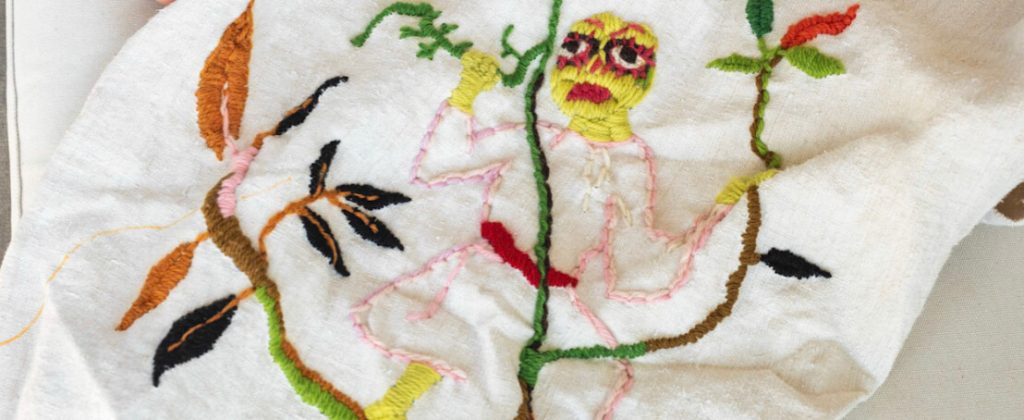
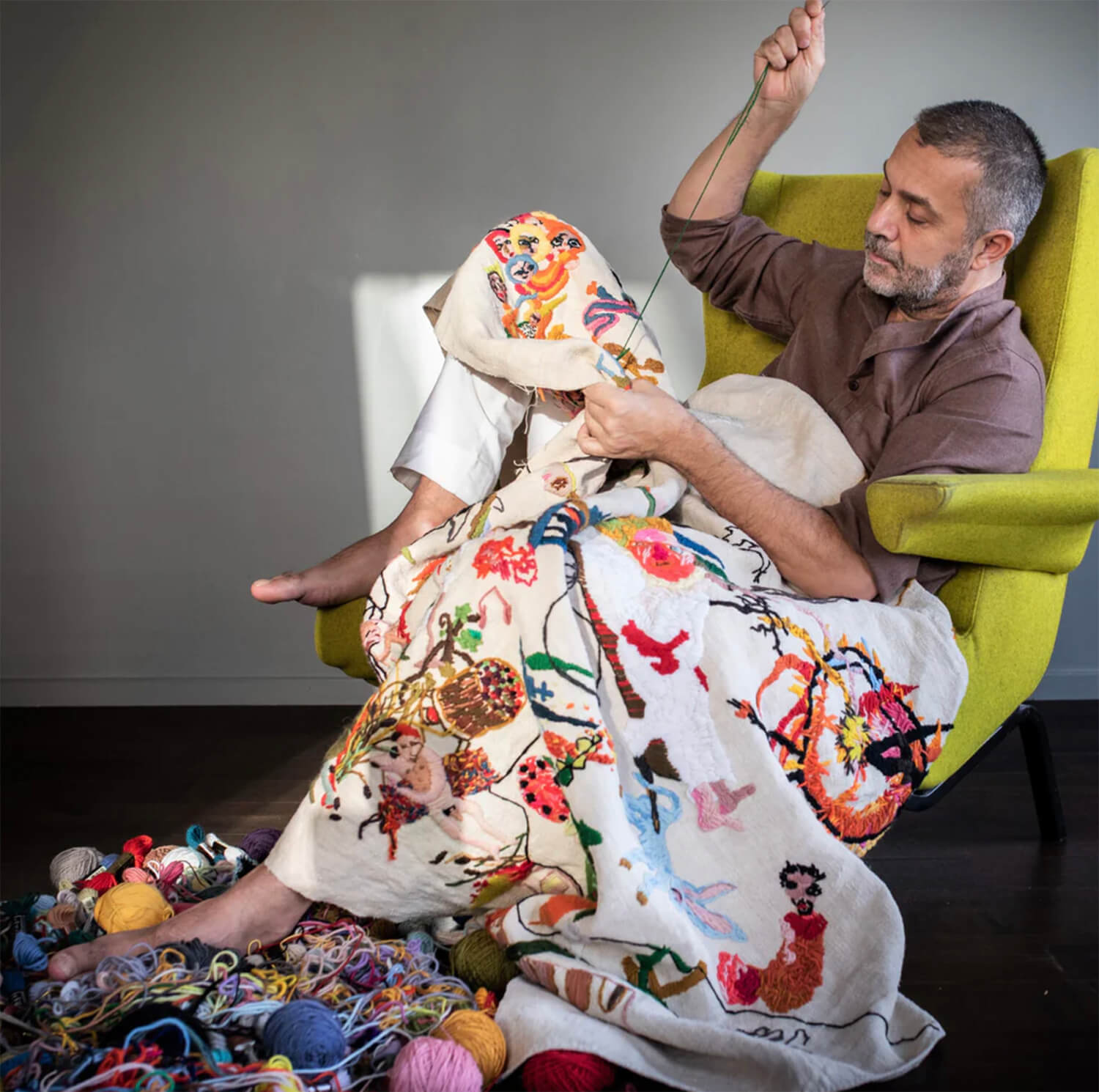
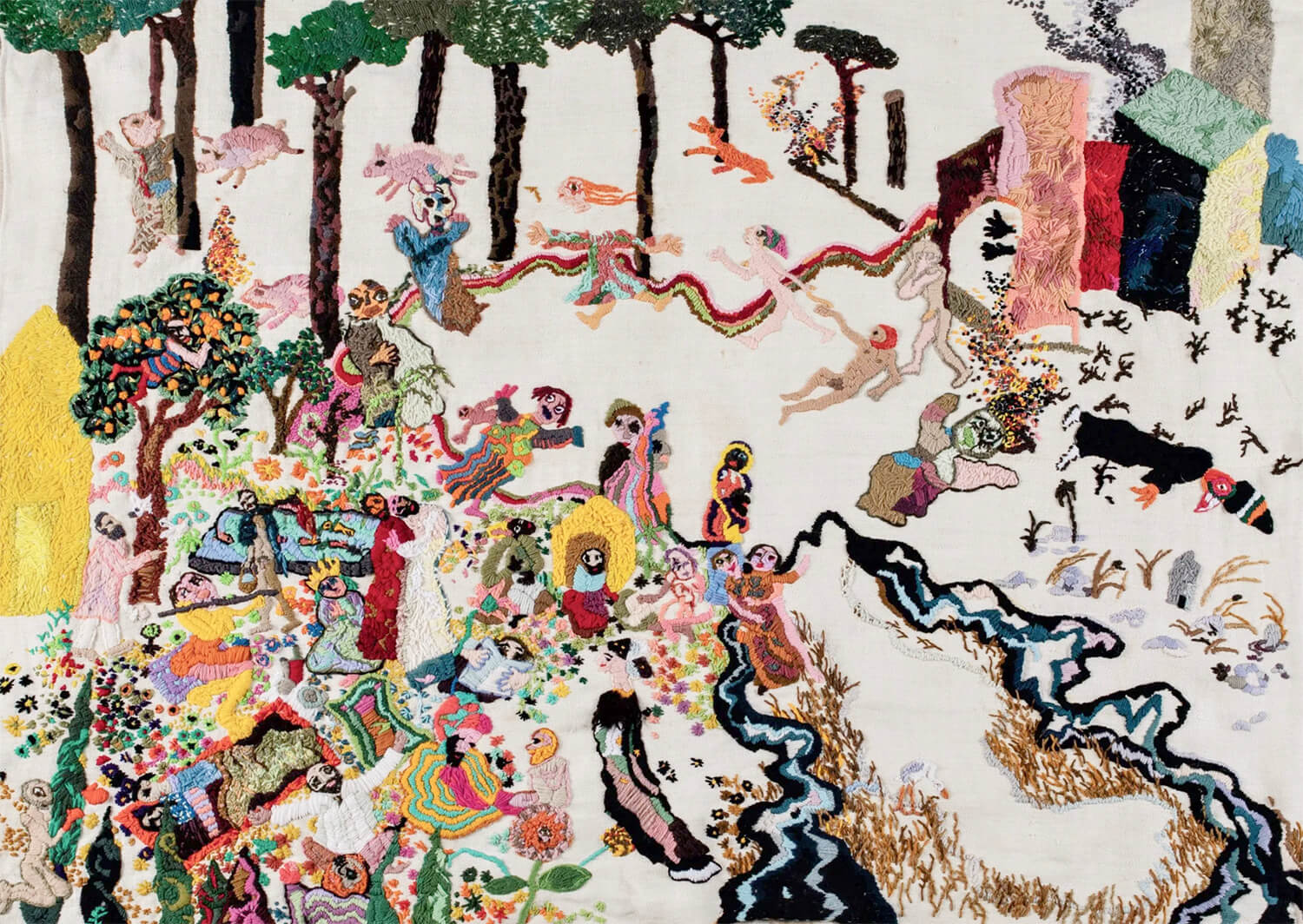
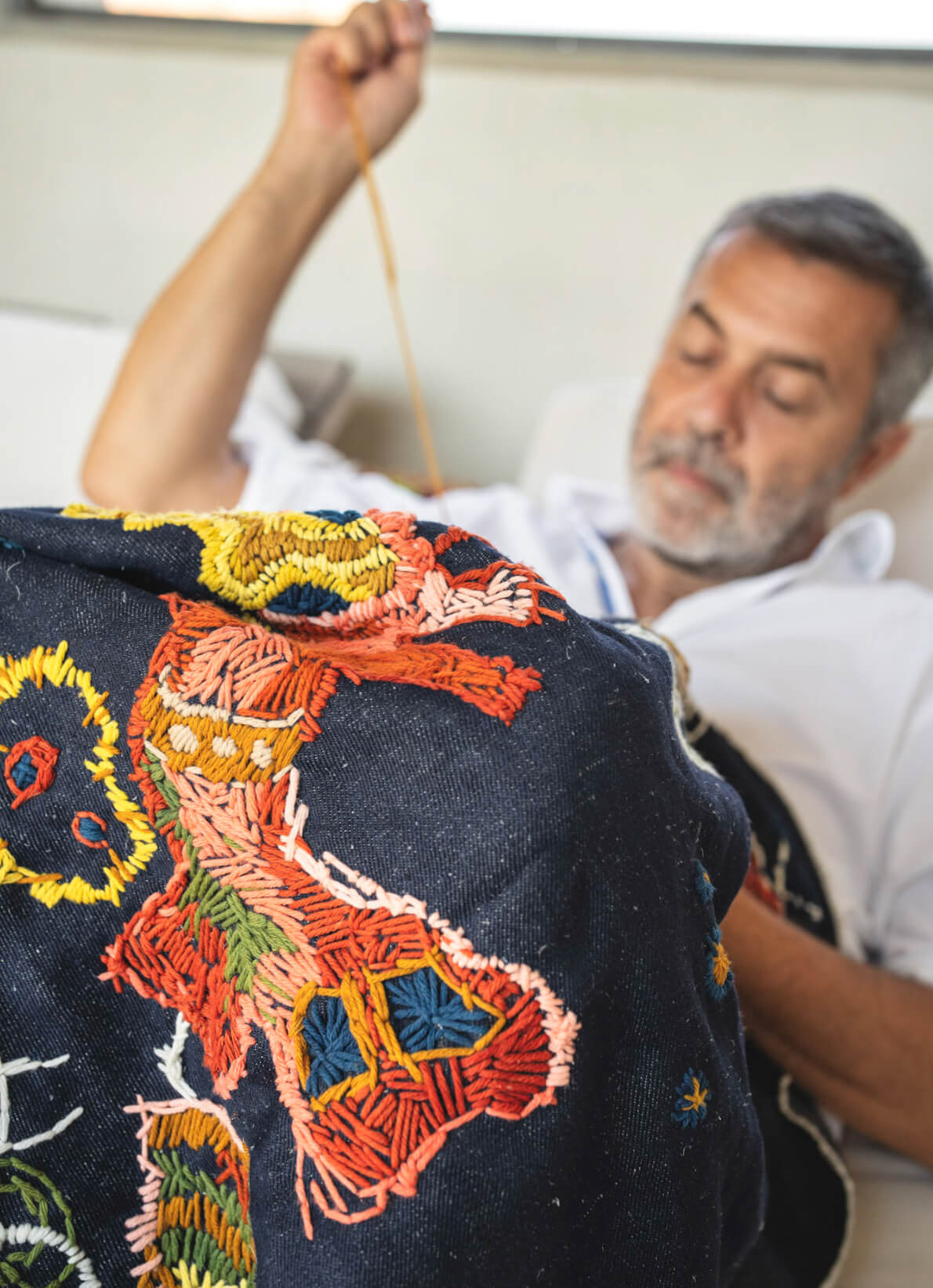
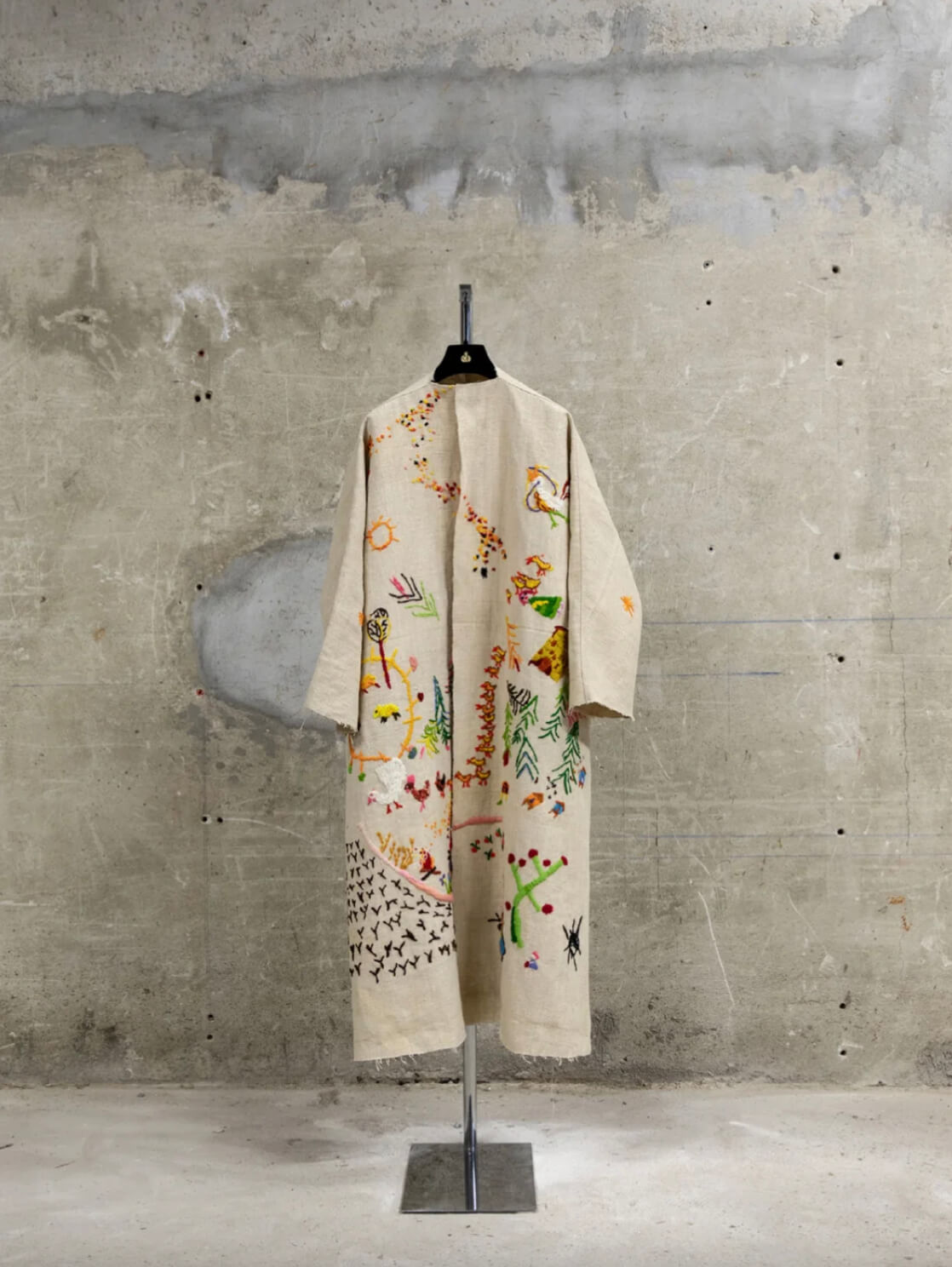
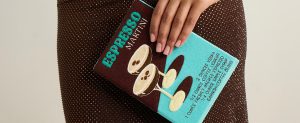
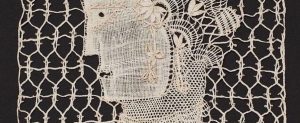
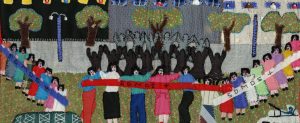
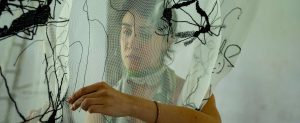
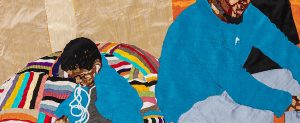















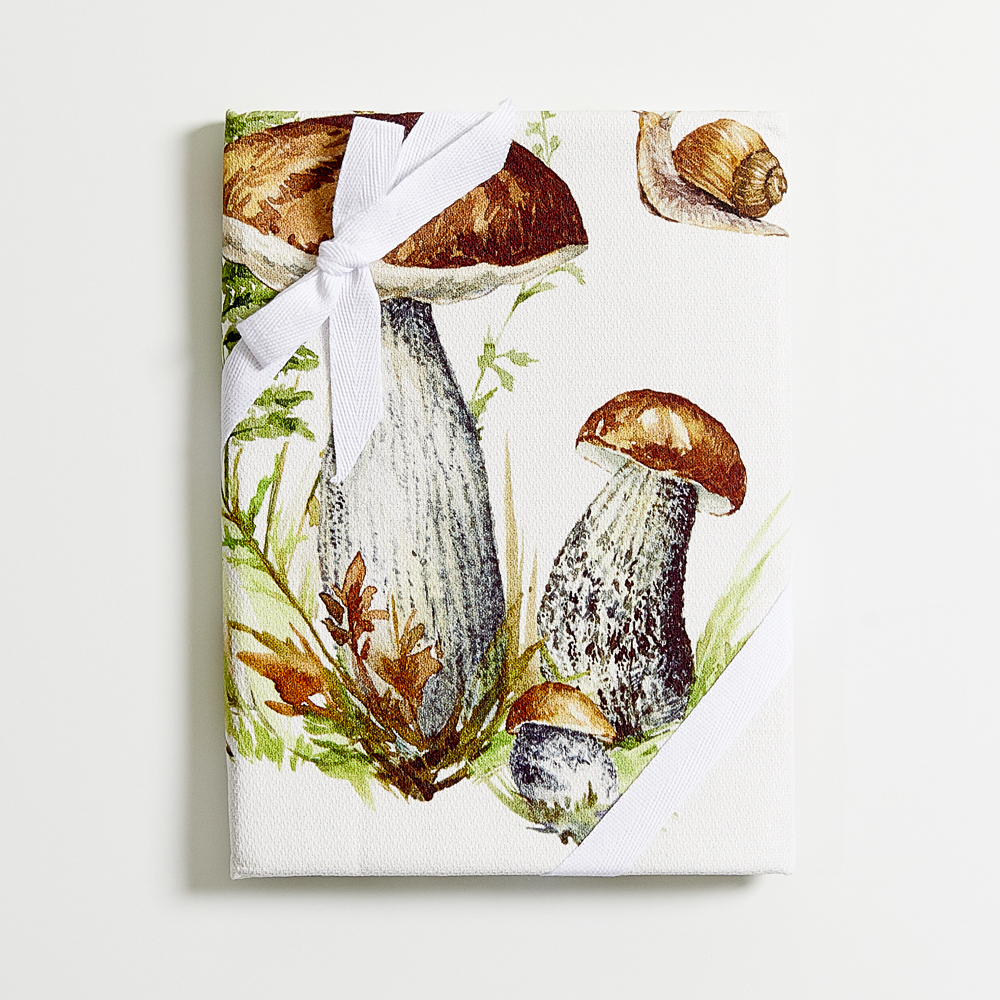








4 Comments
Jen NJO
Kate,
Have you really looked at the Bayeux tapestry?
Its very refinement lie in the unrefined and child-like stitches, as compared to modern embroidery stitches of today.
Pascal is perfectly correct in saying he takes up the technique, without, in all humility, comparing his work to that tapestry.
J. Jungkuntz
Thank you for this very interesting story about P. Montiel’s
life and work. I am particularly pleased to see the white robe embroidered in his personal style. That item, a garment carrying a personal story, is deeply moving to me. It reminds me of personal items, to wear or use, created by so many craftspeople around the world. Take care and my best wishes to you, to Mr. Montiel, and fabrics-store.com. Janet Jungkuntz
Patricia Saab
Extraordinary! There’s more on his Instagram account ~
Kate Renwick
I find this work very disturbing particularly the reference to the Tower of Babel. There is a child like simplicity to it and I cannot relate it to the Bayeux Tapestry at all.. The bright colors add to the childishness or perhaps it’s the poor stitching.. It’s great that you show us this kind of work Rosie. I just don’t have to like it! I’m sure others will.